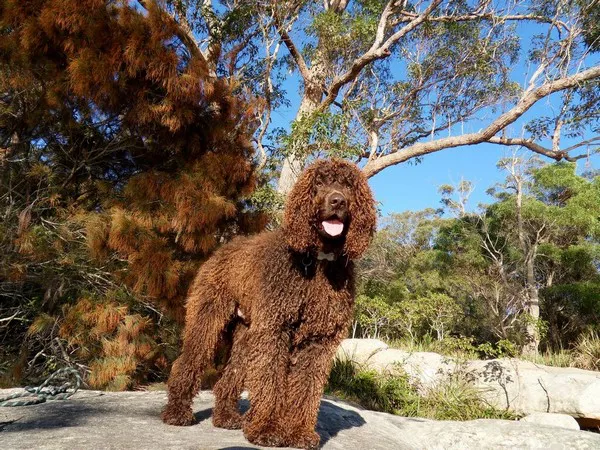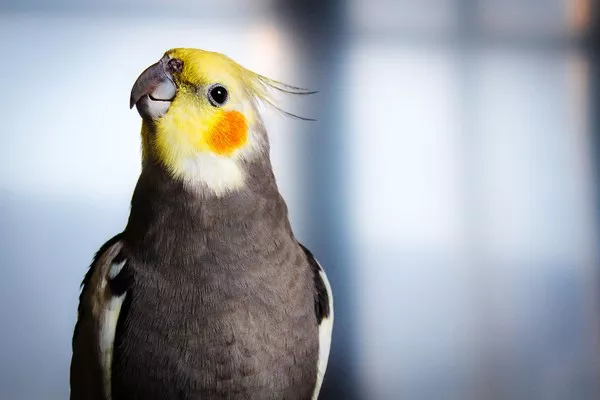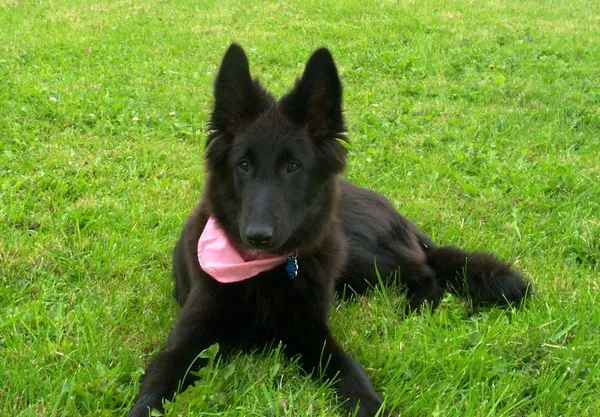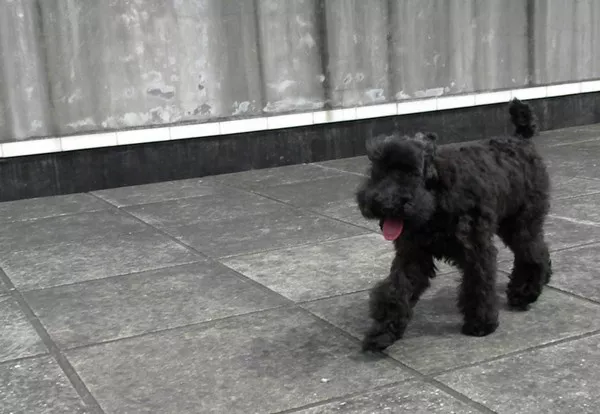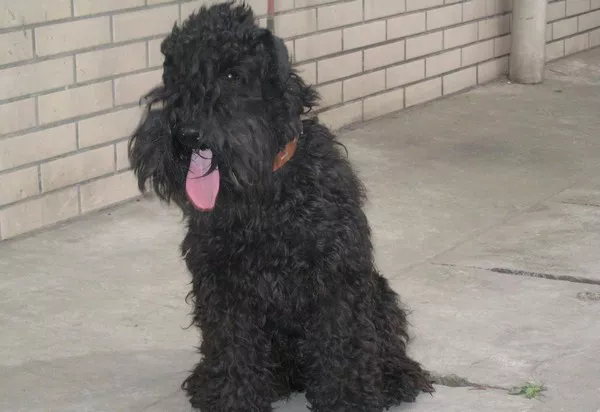The Airedale Terrier, known as the “King of Terriers,” is a noble and dynamic breed, admired for its size, intelligence, and excellent working abilities. Originally bred for hunting and retrieving, this breed has an impressive history, thriving in various environments and proving itself as a versatile and loyal companion. However, as with all dog breeds, the Airedale Terrier comes with its own set of challenges and disadvantages. This article will explore the potential downsides of owning an Airedale Terrier, from temperament issues to physical maintenance, to help prospective owners make an informed decision.
1. Stubbornness and Independent Nature
One of the most well-known traits of the Airedale Terrier is its strong-willed and independent character. While these traits can be positive in certain circumstances, they can also present challenges for dog owners. Airedales are not known for being overly eager to please, which can make training more difficult compared to other breeds. They tend to think for themselves, which can result in them ignoring commands if they are not convinced of their necessity.
Training challenges: Due to their independent nature, Airedales may resist training commands and may not always follow instructions without a firm and consistent approach. Owners must be prepared to dedicate a significant amount of time to training sessions, using positive reinforcement techniques like treats and praise to maintain the dog’s interest. Harsh training methods should be avoided, as they can lead to confusion and frustration in the dog.
What does this mean for an owner? While Airedales can be trained with patience, consistency, and positive reinforcement, potential owners should be aware that this breed requires an experienced handler who is capable of maintaining firm leadership without resorting to punishment.
2. High Energy Levels
Airedale Terriers are active and energetic dogs, requiring regular exercise to stay happy and healthy. These dogs were originally bred to work and hunt, so they have high stamina and need plenty of physical activity. Without enough mental and physical stimulation, Airedales may become bored, leading to destructive behaviors like chewing, digging, or excessive barking.
The need for exercise: Daily exercise is essential for an Airedale to release its energy. A typical walk might not be enough for this breed. Airedales thrive with activities like running, playing fetch, hiking, or agility training, which allow them to stretch their legs and engage their minds. If their exercise needs are not met, they may become hyperactive or even develop behavioral issues.
What does this mean for an owner? Owners should be prepared for an active lifestyle and commit to providing their Airedale with ample exercise and mental stimulation. A lack of activity can lead to an unhappy and potentially destructive dog.
3. Socialization Challenges
Although Airedales are generally friendly and affectionate towards their family members, they can be somewhat reserved or aloof with strangers. Early socialization is crucial for helping them become well-rounded and confident around people and other animals. However, without proper socialization, Airedales may develop guarding tendencies or be overly protective of their territory, which could result in aggressive behaviors if not properly managed.
Airedales and strangers: Unlike some other breeds, Airedales are not typically the type to welcome every person they meet with open arms. They may show a bit of wariness or hesitance when encountering unfamiliar people, which could be intimidating for guests in your home. Socialization from a young age is key to ensuring your Airedale is comfortable around different people and situations.
What does this mean for an owner? Owners need to provide early socialization experiences for their Airedale Terrier, ensuring the dog is exposed to various environments, people, and other animals. This helps reduce the risk of aggressive behavior and builds the dog’s confidence in different situations.
4. Aggression Towards Other Animals
Airedale Terriers were originally bred to hunt and guard, and as such, they have strong prey drives. They may be inclined to chase after small animals, including cats, rabbits, or other small pets. While they can coexist peacefully with other dogs if raised together, they might not get along with unfamiliar animals, especially small ones.
Potential for aggression: Despite being friendly with their human families, Airedales can show aggression toward other dogs, particularly if they are not properly socialized or if the other dog is perceived as a threat. This can be problematic, especially in multi-pet households, and requires careful management.
What does this mean for an owner? If you have other pets in the home, it’s essential to introduce them carefully to your Airedale Terrier. Supervising their interactions is important, especially with smaller pets or animals that might trigger the Airedale’s prey drive. Owners should be aware of their dog’s tendencies and work on desensitizing them to other animals.
5. Grooming and Coat Maintenance
The Airedale Terrier has a distinctive, wiry coat that requires regular grooming to keep it looking its best. While many people admire the breed’s signature look, the grooming process can be quite labor-intensive and requires significant time and effort. An Airedale’s coat is dense and harsh, and it needs to be hand-stripped or clipped every few months to avoid matting and tangles.
The grooming process: Unlike short-haired breeds that require only minimal brushing, the Airedale’s coat needs to be stripped (a process of plucking the dead hair from the coat) to maintain its texture and appearance. This grooming task can be done by a professional groomer, but it can also be performed by the owner if they have the right tools and knowledge. It is also important to brush the coat regularly to prevent tangling.
What does this mean for an owner? Owning an Airedale Terrier means committing to a more involved grooming routine. If you don’t have the time or inclination to maintain the coat, you may need to budget for professional grooming services every few months.
6. Health Issues
Like all breeds, Airedales are susceptible to certain genetic health problems. While they are generally healthy dogs, there are some health concerns that potential owners should be aware of. Common health issues in Airedale Terriers include hip dysplasia, hypothyroidism, and certain types of cancers.
Hip dysplasia: This is a common condition in larger breeds like the Airedale, where the hip joint doesn’t develop properly, leading to pain and mobility issues. Regular vet check-ups and maintaining a healthy weight can help reduce the risk of hip dysplasia.
Hypothyroidism: Airedales are also prone to thyroid issues, which can lead to weight gain, lethargy, and coat problems. Regular blood tests can monitor thyroid levels, and medication can help manage the condition.
What does this mean for an owner? It’s essential to be proactive about your Airedale’s health care. Regular veterinary visits, a proper diet, and maintaining a healthy lifestyle can help mitigate some of these health risks. Being prepared for potential medical expenses is also crucial when owning a breed that may require specialized care.
7. Difficulty in Finding Suitable Pet Sitters or Boarding
Due to their size, temperament, and specific needs, Airedale Terriers may be more challenging to care for when you’re away from home. Not all pet sitters or boarding facilities are equipped to handle the unique needs of an Airedale, especially when it comes to their exercise and socialization requirements. This can make traveling or taking time away from home more complicated for Airedale owners.
Pet care challenges: Because Airedales are large and active dogs, finding the right caretaker who understands their needs can be difficult. Some boarding kennels may not have enough space or staff to provide the level of exercise and attention an Airedale requires.
What does this mean for an owner? Owners should plan ahead when traveling or going on vacation, ensuring they find a suitable pet sitter or boarding facility. This may involve extra research and booking in advance to ensure that the Airedale’s needs are met during the owner’s absence.
8. Not Ideal for First-Time Dog Owners
The Airedale Terrier is best suited for experienced dog owners due to its independent nature, high energy levels, and training challenges. For first-time dog owners, an Airedale may prove to be a difficult breed to manage, especially without prior knowledge of dog training techniques, behavior management, and breed-specific needs.
Why they may not be suitable for beginners: First-time owners may struggle with the Airedale’s strong-willed temperament, exercise demands, and grooming requirements. Without experience, they may become frustrated with the dog’s stubbornness or lack of responsiveness to training.
What does this mean for an owner? Prospective Airedale owners should be honest about their experience level and whether they are prepared for the responsibility of owning a large, active, and independent breed. If you’re new to dog ownership, it may be helpful to work with a professional trainer or consider a more beginner-friendly breed.
Conclusion
The Airedale Terrier is a remarkable breed with many strengths, including intelligence, loyalty, and versatility. However, like all dogs, they come with their own set of challenges and disadvantages. Potential owners should be aware of the breed’s strong-willed nature, high energy levels, grooming needs, and potential health issues. Additionally, Airedales may require significant socialization to avoid behavioral problems and may not be the best choice for first-time dog owners.
By understanding and preparing for these potential challenges, you can ensure that both you and your Airedale Terrier enjoy a long and happy relationship. With the right care, training, and attention, the Airedale can be an incredibly rewarding companion for those willing to invest the time and energy required to meet its needs.
Related Topics:


